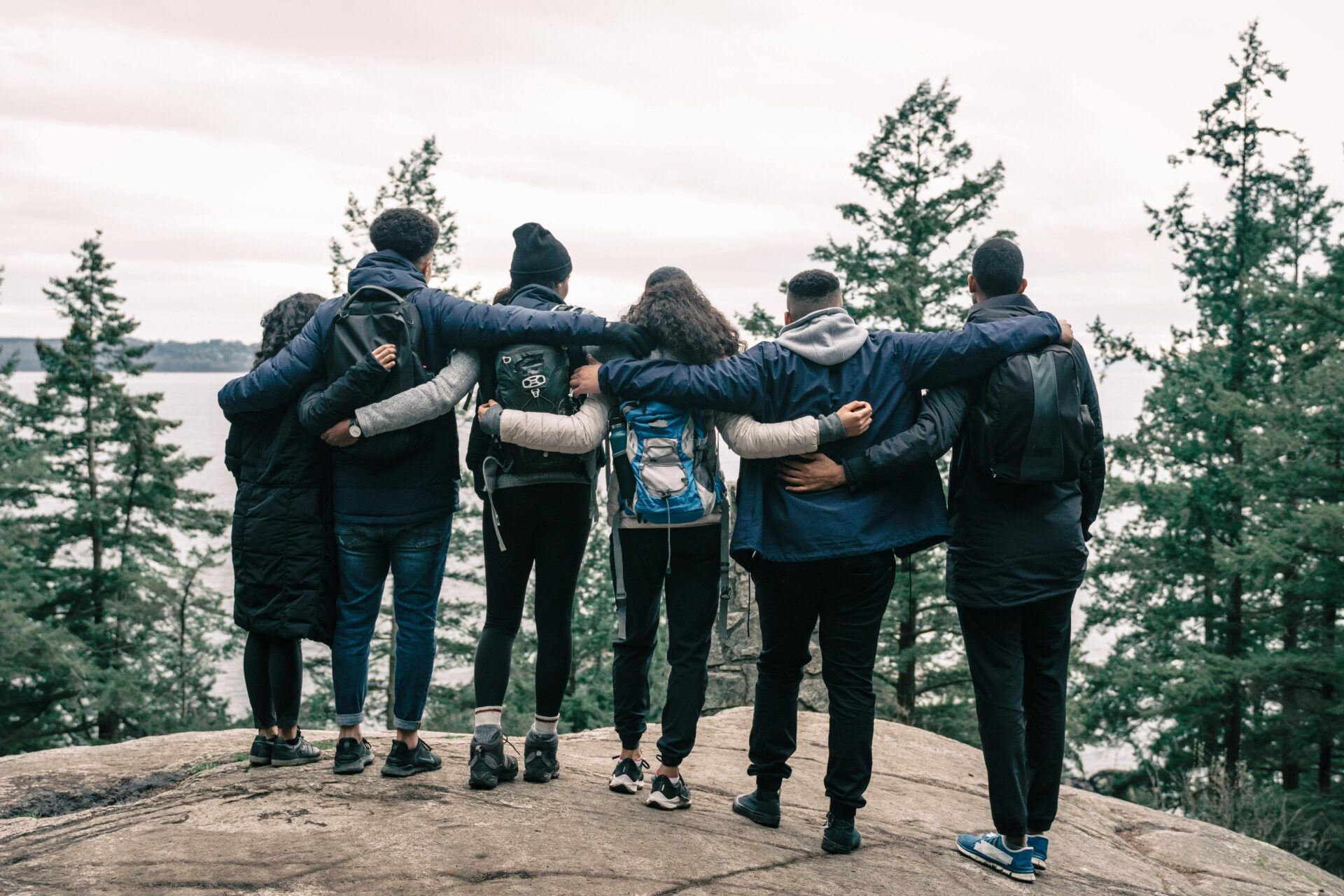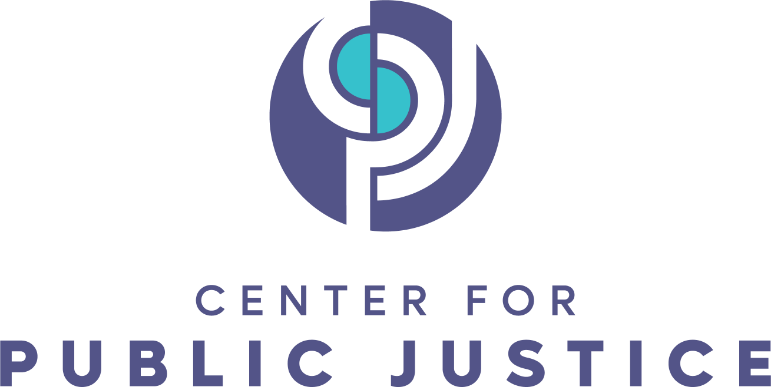
Preventing youth substance abuse and juvenile delinquency isn’t just about warning teens and children of the dangers of alcohol and illicit substances. It’s also about offering youth opportunities to develop resilience and hope.
This is one of the principles behind Project Venture, an adventure-based, experiential learning program designed for Indigenous youth.
Project Venture, founded by McLellan “Mac” Hall, who is a member of the Cherokee Nation, has programs in 25 U.S. states, eight Canadian provinces, Hungary, and Jamaica. It grew out of Hall’s experience working as a teacher and principal in tribal schools in Oklahoma and with a Cherokee culture camp in the 1980s. Hall told CPJ the idea for the program came to him in a dream in the 1970s, but at the time, he “didn’t know what to do with it.” However, with help from his mentor, a Cherokee medicine person, he started to put together the program, a mix of “Outward-Bound kind of outdoor adventure programming and culture and service learning,” said Hall.
In 1988, Hall founded the National Indian Youth Leadership Program (NIYLP), which is now known by the name of its flagship program, Project Venture, to help youth “achieve their full potential” and “become leaders in their community.”
The program has also been recognized as a successful substance abuse prevention program. In 2004, it was deemed a “Model Program” in Substance Abuse and Mental Health Services Administration (SAMSHA)’s National Register of Effective Prevention Programs (now known as the Evidence-Based Practices Resource).
More recently, it was used as a case study for an analysis of culturally relevant, evidence-based programs. However, its curriculum takes an “indirect approach” to substance abuse prevention, according to Hall.
“We help kids become resilient by experience, you know, experience in positive activities and positive people,” said Hall. “And we’re convinced that that approach is the best way to go about it.”
The Need for Programs
The difficult circumstances its participants face, for McLellan, is why the program employs positive approaches. Native Americans face high incarceration rates and an outsized number of alcohol-related and alcohol-specific arrests. High rates of alcohol-related incarceration may not always be the result of higher levels of alcohol abuse. A 2022 study found that Native Americans reported binge drinking and heavy drinking at about the same rates as the total population. However, Native Americans, like Black and Latino Americans, are significantly more likely than white Americans to be booked into jail for misdemeanor drug- and alcohol-related offenses rather than cited and released.
Racism and racial disparity have long affected Native American lives. Historically, many tribes have been displaced from their land, and their youth forced into often-abusive boarding schools intended to assimilate them into Anglo-American culture. Across the U.S., the poverty rate among those who identify as Native American or Alaska Native is around 27%, though socioeconomic situations vary significantly depending on tribe and region.
“There’s so much racist stuff going on there that kids really need a break. They need some way to develop their own potential,” said Hall.
Hall was referring specifically to the Pine Ridge Reservation of South Dakota, where Project Venture runs a program. The reservation originated as a prisoner-of-war camp for the Lakota Sioux. As of 2016, over half of its residents were below the poverty line, and the reservation has above-average rates of suicide and alcoholism. Residents interviewed by AlJazeera in 2016 feel forgotten by the U.S. government and by mainstream U.S. society.
“You can just see how growing up in that kind of environment would be damaging to kids, and they would be at a major disadvantage,” said Hall.
Many Native American youth attempt to escape their difficult circumstances through detrimental means.
Many Native American youth attempt to escape their difficult circumstances through detrimental means. According to a 2022 report by the National Center for Juvenile Justice, over a quarter of Native American high school students reported having attempted suicide in the past year. 18.7% of Native American high school students reported trying alcohol — and 12.6%, marijuana — before the age of 13, the highest percentage of any racial or ethnic group.
Because of this, programs that offer Native American youth an opportunity for mentorship and developing connections to their culture are an important means of preventing behaviors — such as substance abuse — that put them at a higher risk of involvement with the criminal justice system later on. This includes not only restorative programs specifically for youth who are already involved with the juvenile justice system but also preventative programs aimed at helping youth find better things to do with their life.
One such program is Project Venture, which prioritizes looking for activities — such as mindfulness — “that will help them and make them stronger, and help them get through a lot of historical trauma,” according to Hall.
Flexibility to Serve a Population
Project Venture is considered an “arts-based program” by the Office of Juvenile Justice and Delinquency Prevention (OJJDP), which lists the organization in its Model Program Guide as a “Promising Program.”
“Arts-based” in this context is used in a broad sense to refer to a range of creative and intellectual activities, not just the traditional fine arts. One early program, Art-at-Work, trained participants on how to create and sell creative work, which could include photography, furniture design, and ceramics.
Art-based programs for justice-involved or at-risk youth have attracted the interest of the federal government since the 1990s. In 1995, the Office of Juvenile Justice and Delinquency Prevention (OJJDP) became involved with the YouthARTS Development Project in order to “identify, implement, and refine effective arts-based delinquency prevention programs.”
In April, the Office of Juvenile Justice and Delinquency Prevention announced an opportunity for funding for arts programs that serve youth who are involved with — or at risk of being involved with — the juvenile justice system. According to the program’s description, a priority in deciding recipients of the grant is the organization’s ability to provide “population-specific” services to communities that have been “historically underserved” and “disproportionately impacted by crime, violence, and victimization.”
One consideration in providing services — especially to underserved communities — is ensuring they will be relevant to their audience. SAMSHA’s 2021 analysis found that there is an “evident need for culturally relevant behavioral health practices,” and that successful implementation of programs required “some degree of customization to meet the needs of specific racial and ethnic groups.”
In part, cultural relevance is important because it ensures the explanations of a topic can readily be received by their audience. For instance, certain models for understanding mental health may better fit certain communities’ beliefs and practices. Additionally, cultural continuity has been connected to lower suicide rates in Native American youth, suggesting that connection to one’s culture and traditions plays an important role in behavioral health.
In the case of Project Venture, which was featured in the analysis, this often means changing specific activities to better fit local landscapes or reflect a tribe’s customs, culture, and ceremonies. At Pine Ridge, this meant finding activities better suited for the South Dakota prairie than the ones that had been popular in New Mexico.
“You have to be able to be flexible and figure out how to adapt what we do to the environment and the culture where you’re at,” said Hall.
This also means being respectful of the “spiritual practice of the communities that we’re working with,” according to Hall. The program, which is not faith-based, attracts participants and staff with a diverse range of faith backgrounds, including Christians, Mormons, and those who practice an Indigenous faith. Because of this, some people may choose to opt out of certain activities due to their religious beliefs.
Some Christians may object to programs that teach participants about — and encourage participation in — traditional Indigenous ceremonies, which Christians may perceive as opposed to their faith. A Christian organization with a similar purpose might seek guidance from the significant number of Native American Christians on how to approach specific ceremonies. However, including people’s traditional beliefs — whether Christian, Indigenous, or something else — can be a way of making participants feel more at home in rehabilitative and preventative programs. Organizations that reflect a certain identity are at an advantage in building trust with their participants and may therefore be more effective.
However, including people’s traditional beliefs — whether Christian, Indigenous, or something else — can be a way of making participants feel more at home in rehabilitative and preventative programs.
Thus, it is important that there are programs — faith-based or not — for youth from a variety of traditions as well as programs that are sensitive to the diverse beliefs of those they serve. This is especially true with creative programs since art and culture education often reflect one’s faith even if not intended to be explicitly religious.
A Christian organization working with a diverse population might take a similar approach to that of Project Venture: presenting their beliefs and practices but allowing program participants to opt-out if they are not comfortable participating.
Offering Rest and Hope
The intertangled problems of suicide, substance abuse, and incarceration among Indigenous youth likely won’t be solved with just one solution, as many youth face the pressures of both poverty and generational trauma within their community, and racism and apathy from outside. However, programs where youth work toward positive development while having a break from these pressures are part of the solution.
Such programs often come with a financial cost. One consideration of Project Venture’s model, according to the SAMSHA analysis, is that it “requires more resources, partners, staffing, and planning than most youth programs.” Some of these costs can be minimized by borrowing equipment or facilities from other organizations. However, others — such as ensuring staff have adequate training in program facilitation, first aid, and wilderness first response — can’t easily be cut without risking the success of the program, or the safety of its participants.
To keep the program free for participants, the organization and its local programs rely on grants from the government and from private donors. This year, NIYLP received a $2 million grant from MacKenzie Scott’s organization, Yield Giving, which it plans to use to build its own camp, according to Hall. (Presently, camp activities are held at other organization’s facilities.) Local programs must also fund their own activities through grants; the analysis suggested that it takes about five years for a program to become self-sufficient.
Private donors and organizations can — and should be — involved in helping support youth organizations. Nevertheless, as stated in CPJ’s Guideline on Welfare, the government “should fulfill its welfare responsibility in part by underwriting the work of nongovernment organizations (NGOs), which are close to the needs and devoted to alleviating them.” The government also has a responsibility to protect the religious freedom of its citizens by “ensuring that a variety of providers with different philosophies of assistance are available” for those seeking help.
Public-private partnerships may be especially important for developing culturally relevant programs that serve specific communities and their culture, history, and approach to religion and spirituality. The government as well as private donors can help fund individual organizations. These organizations can — and should — partner with each other where possible to offer the best care to those seeking aid. This could include referring clients to each other where one organization might better serve a specific person’s needs. It might also include allowing other programs to borrow facilities and equipment or rent them at an affordable rate.
These organizations can — and should — partner with each other where possible to offer the best care to those seeking aid.
Individuals also have a responsibility to educate themselves on the histories and realities of specific communities in order to make clear-minded decisions and statements related to policy. For instance, when talking about Native American alcohol-related incarceration, it’s critical to realize that racial discrimination plays a significant role in these higher numbers. Thus, justice should include not only a restorative aspect of offering substance abuse treatment to offenders but also policies to ensure fair and equal treatment for those arrested on alcohol-related charges — regardless of race.
Moreover, services for communities — including many Native American and First Nation communities — who have experienced significant trauma should reflect the values of the people they serve. While programs aimed at warning people of the dangers of bad behavior have a purpose, there are also times when it might be better to focus on offering rest and hope.
Grace Buller is a writer from Jenison, Michigan and a student at Calvin University, where she is the managing editor of Calvin Chimes. Her non-writing interests include the 1960s, fashion, and plants.






